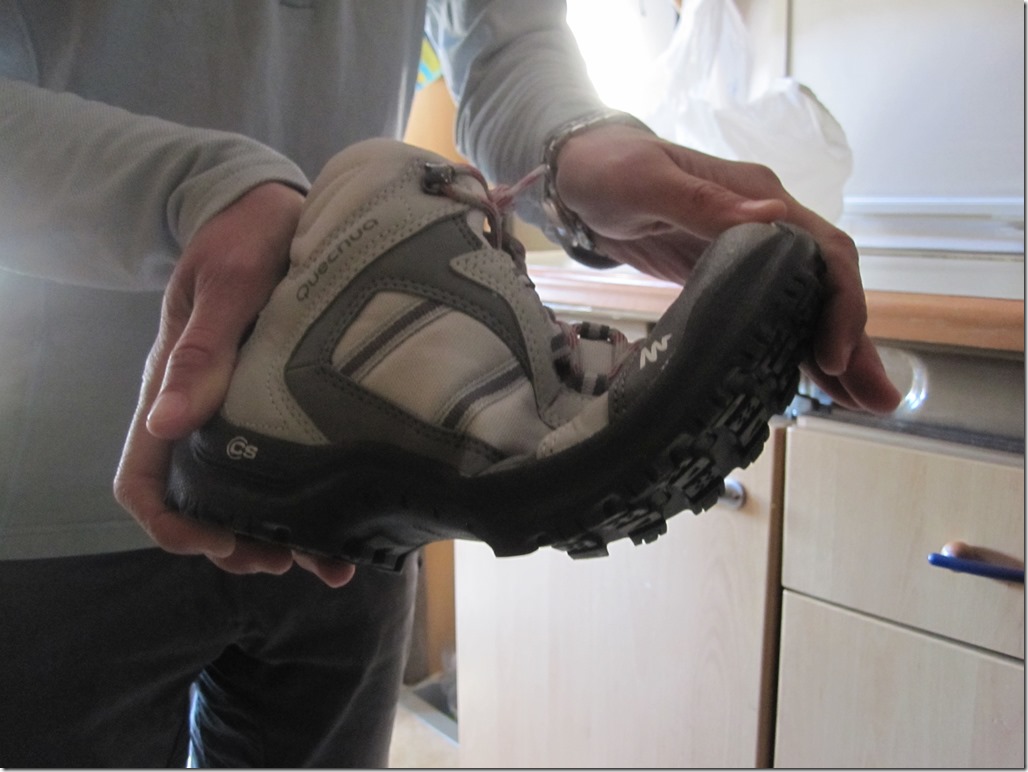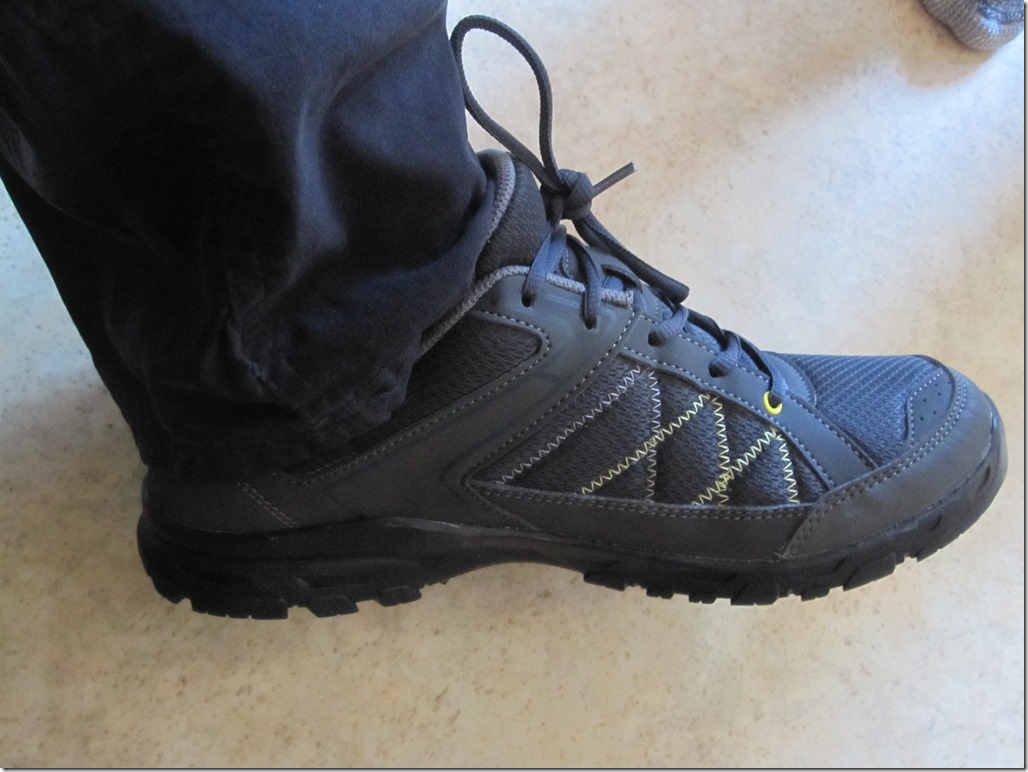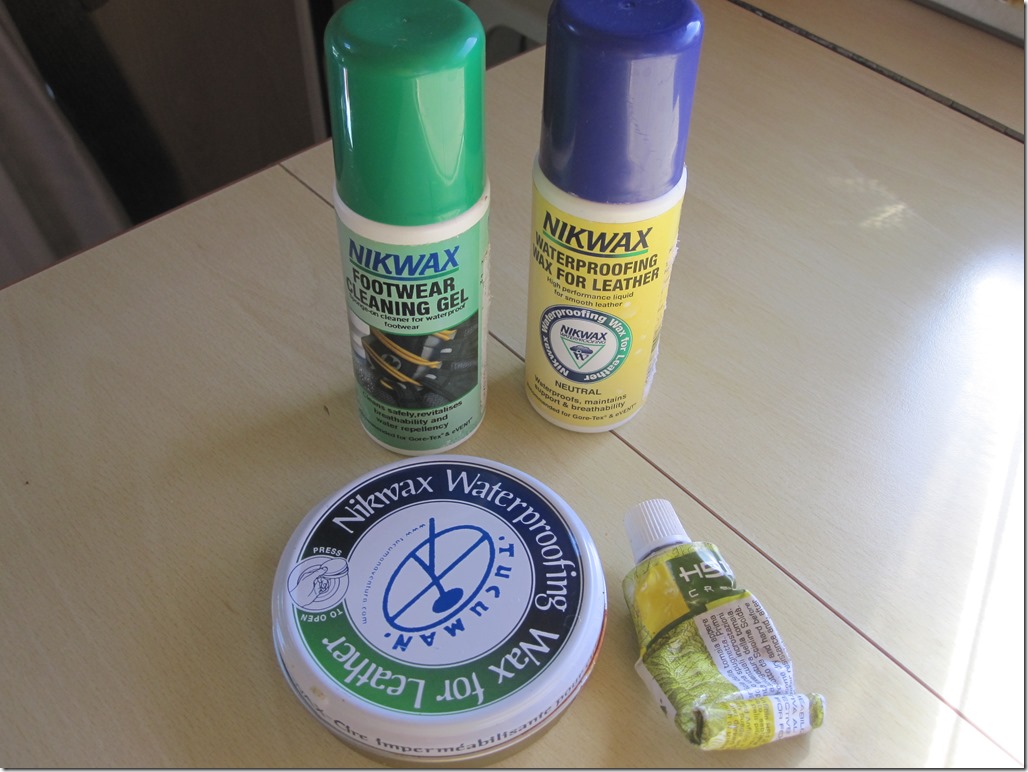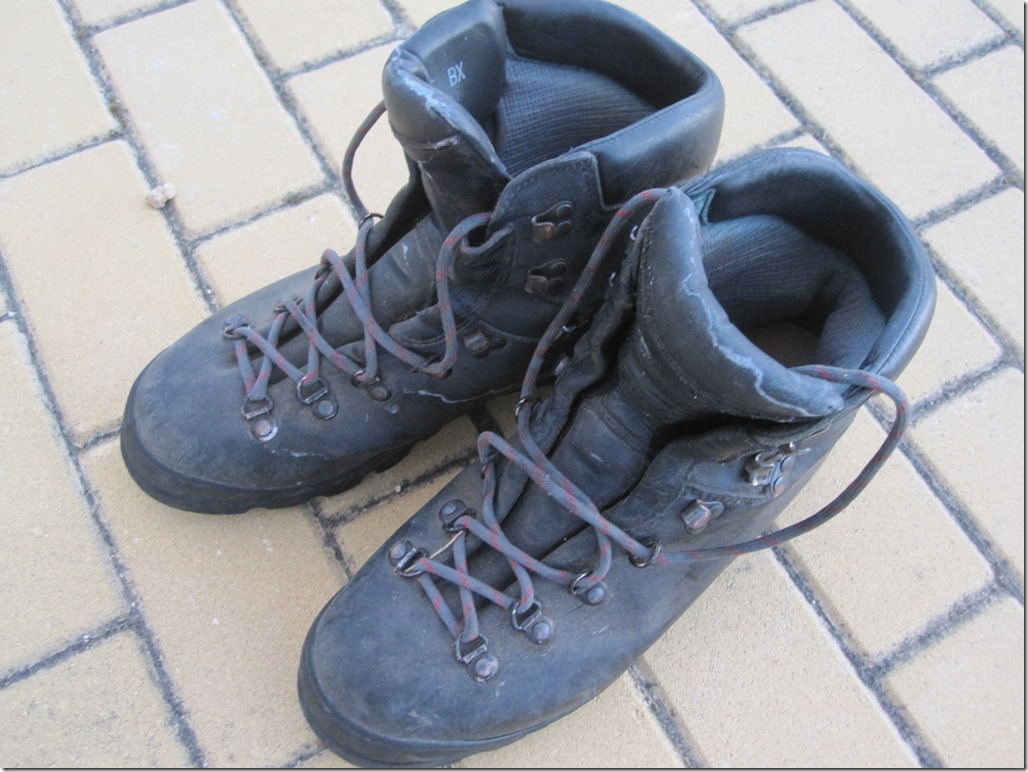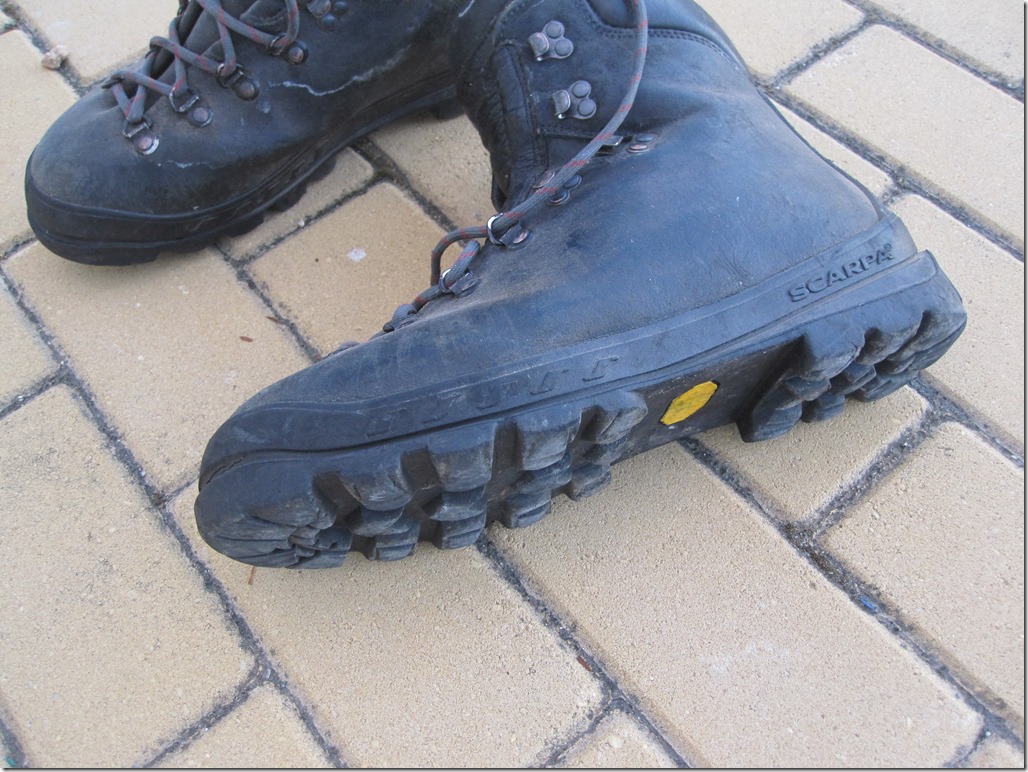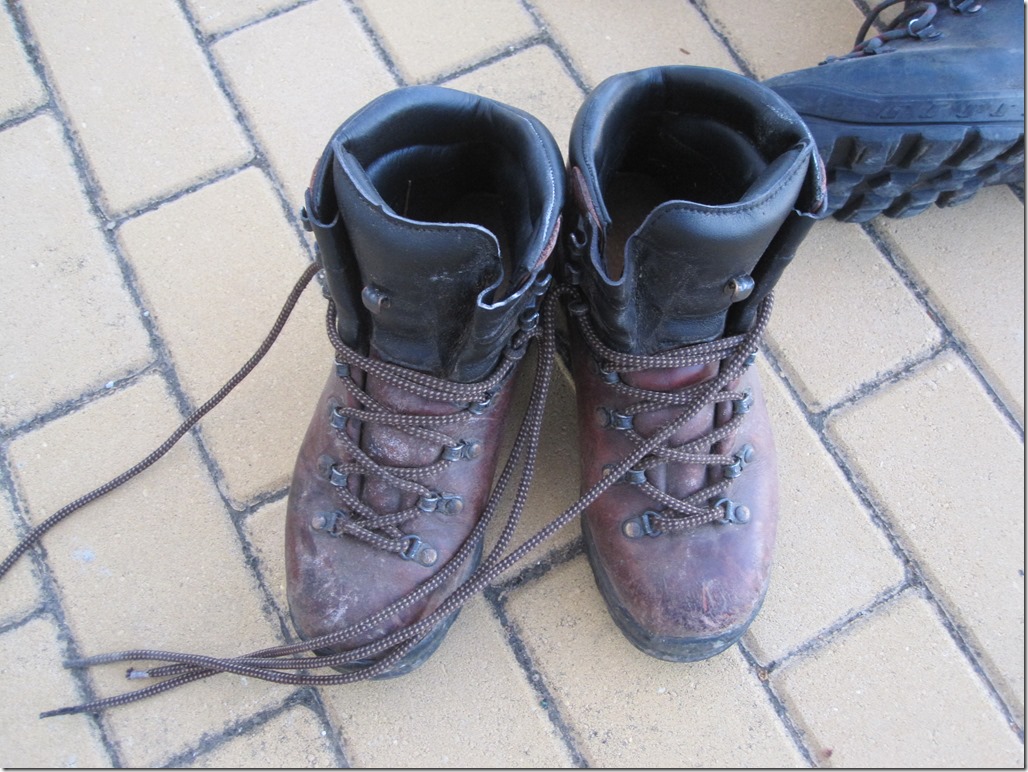It is your little toes, soles and ankles that will get you to the summit of that mountain, up that hill or along that coastline, so you need to look after them.
And what better way to look after them than a good pair of shoes. Wrong already, what you really need are boots! We see so many people out on the hill with inappropriate footwear. We have seen people wearing flip flops, wellies, sandals, but mostly trainers.
Trainers are just not up to the job. They might be good for the gym, the shopping centre, even work, but for trekking, they are not strong enough, waterproof, but most importantly, they give no protection to your ankles. When on the trail you will be walking on every conceivable terrain; sand, mud, snow, ice, scree stone and rock. It is the last two where turning you foot over would leave you with a sprained ankle or worse. You need ankle protection and therefore a boot.
Rating
Walking apparel have a rating system from B0 through to B3. It should be noted that there is a general relationship between stiffness and sole and rating of boot and weight, therefore the B3 boot will generally have a stiffer sole and will be heavier than the B2, B1 and B0. The stiffness of the sole also relates to the the support of the foot, more stiffness, more support.
Here are pairs of shoes we wear when not in the mountains, maybe for walks around town.
Note how flexible the sole is, not good for the trail as they wouldn’t support your foot properly, and there is no real ankle support.
Might look outdoorsie, but not up to the job.
You may also come across a different rating system that relates to the amount of seasons a boot is suitable for. The three season boot being suitable for all seasons except winter, snow and ice. This has much to do with warmth than anything else. Really extreme boots will then consider high altitude and extremely low temperatures. These may often come with separate insulated linings, similar to ski boots.
| B0- | These are walking boots and while they maybe suitable for a fairly rugged terrain they have a flexible sole, which is not suitable for the wearing of crampons. |
| B1- | 3 or 4-season boots with some flexibility of the sole. These may take a simple strap on crampon.This boot and all above will have good ankle support. |
| B2- | 4-season boots with very little flexibility in the sole and more support than a B1. These will usually take an articulated crampons (clip and strap). These can be used for serious mountaineering. They will also take the ‘strap’ style crampons with a B2 boot. |
| B3- | Mountaineering boots with extremely stiff soles and maximum support. They’re good all types of crampon. These are the kinds of boots used on high-altitude mountaineering expeditions. Maybe not so good for walking in the hills, too stiff, too heavy. |
Crampons also come with a rating system from C0 through to C3. The rating systems between the two are fairly transferable, so a B2 boot will take a C2 and below crampon.
While it is important to get the best boot and highest support you can, you should also not over specify your footwear. Getting a high altitude mountaineering boot that only gets to travel around the local supermarket is a waste of money.
Fit
Many good stores will allow you to try out your boot, and as long as it stays in doors, will replace if the fit is not good. This is still not perfect, as it is not until you are on the hill and have completed six hours of good walking, your feet are a bit sweaty, swollen and maybe even wet, when you will find out whether your boots really fit.
I still believe in wearing two layers of socks. A thin sock close to the skin, with a thick sock outside.
The thin sock will ‘wick’ the sweat away from your feet, keeping them dry and comfortable. These are usually synthetic.
We use Bridgedale liner socks.
The outer sock provides protection and if necessary insulation in cold weather. These can be wool and will often be padded around the ankles, toes and heels.
We use Thorlo mountaineer socks.
The two sock method also allow movement between the sock and so helps prevent blisters.
Because of the two socks I take a larger boot than a normal shoe, whereas my shoe size is 43, my boot is 44.
Material
Leather is the traditional material for boots, although in recent years many manufacturers have introduced synthetic materials. Goretex is also now a common selling feature on many boots. The high altitude boots are often constructed from plastic an have an appearance similar to a ski boot.
My preference is for the leather boot, as thick as possible and with as few seams as possible. The thickness helps with support and makes the boot more rugged, the lack of seams makes the boot more waterproof. Leather in itself is not waterproof, but one that is well sealed, will keep out the wet.
Look also for a high rand on the boot. This is the bit of rubber around the sides of the boots, that provides protection to the leather. A higher rand will make your boot last longer.
Maintenance
You cannot look after your boots too much. After every walk brush off all dirt and debris. If wet, allow to dry naturally. Clean and wax periodically as recommended by the manufacturer.
Over time leather dries out and cracks, it is the wax or silicon that keeps the leather moist and prevents cracking. Once cracks have developed, there is not a great deal you can do. A well looked after pair of good quality boots could last ten years.
Many boot manufacturers provide their own proprietary cleaning and sealing products, such as HS12 by Scarpa, this is quite expensive, but goes on really well. We also use Nikwax products.
Where to buy
This is one time when a good old fashioned shop, with a well educated sales assistant can really help. If, however, you know what you want, know your size and fit, but cannot afford, check out eBay. Many people buy good footwear with the best intentions, wear it once and after a couple of years at the back of the wardrobe it ends up on eBay. You might pick up a bargain. I did.
What we use
So what do we use. Between us we have tried about eight different boots so far and are great believers in Italian manufacturers, particularly Scarpa. I am on my third pair of Mantas. The first lasted over a decade and did a lot of trekking a few high peaks including; Mont Blanc, Chimborazo, Pico de Oriziba, Toubkal, and others. The second pair I eventually swapped as they were just a little too small.
Scarpa Mantas, note the lack of seams.
Note the rubber rand above the sole, this protects the leather. On the latest model it is even deeper. Look out for a Vibram sole, quite grippy and wears well. Also look out for a good warrantee.
And Susana’s, lighter, not quite as stiff and well made. Will take a strap on crampon
GDR


